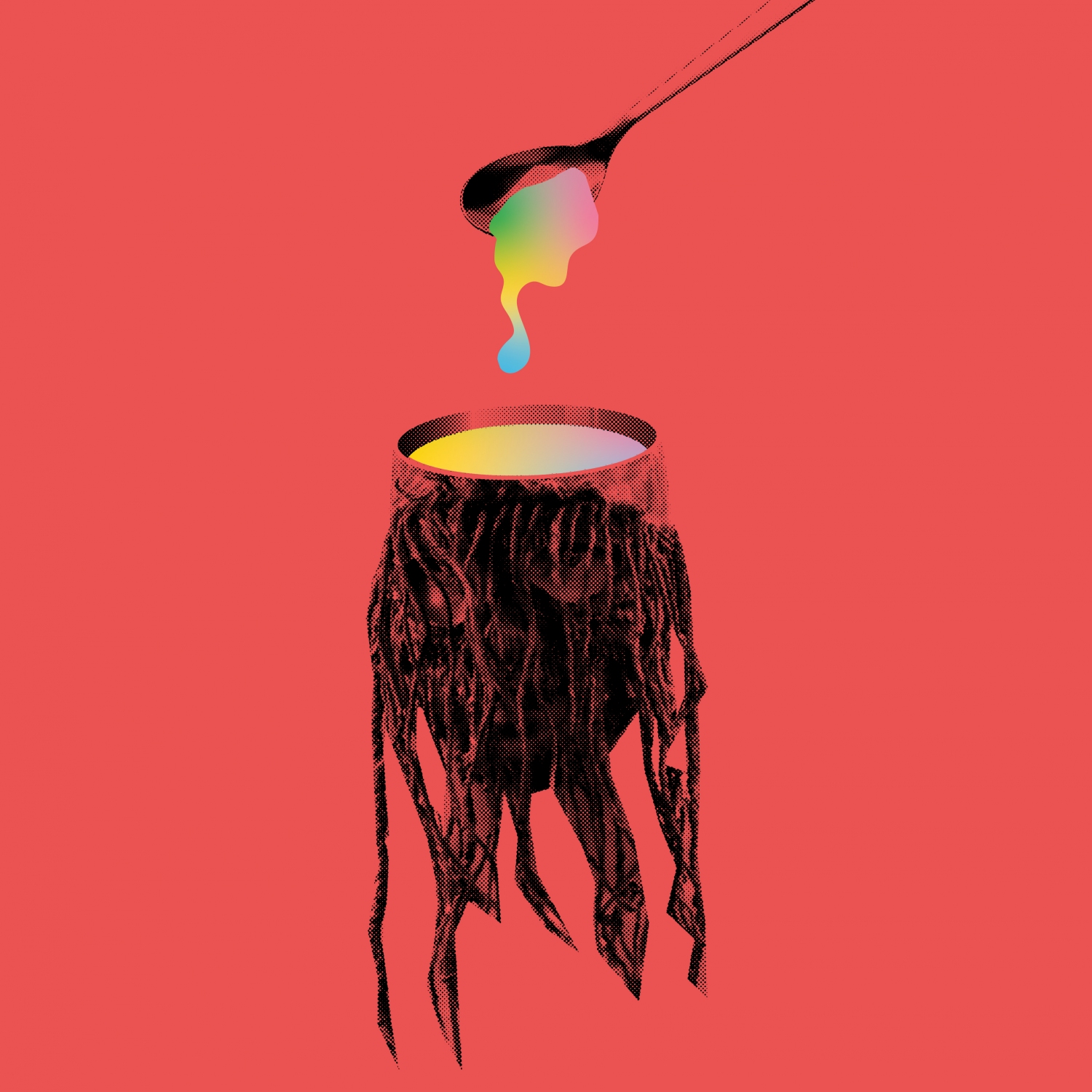‘Outtake’ projects often fail to measure up to a band’s ‘official’ work, serving as questionable hors d’oeuvres until new music is presented. The 13-song Headsoup – comprised of singles, alternate versions of album cuts, and two previously unreleased tracks – is instead a valuable addition to Swedish band Goat’s hyper-eclectic and deftly explorative triptych (2012’s World Music, 2014’s Commune, and 2016’s Requiem).
On the opening “The Sun and the Moon”, chant-y vocals resonate above a cacophony of percussion and wah-wah-driven guitar, a breathy flute joining on the second verse; the guitar-led jam gains quick traction, wending for an adrenalized couple of minutes before an abrupt conclusion. “Stonegoat” spotlights 60s guitar-hero psychedelia (Hendrix) and 70s funk/Afrobeat (Sly, P-Funk). “Dig My Grave” slows things slightly, bringing to mind Big Brother and the Holding Company circa their 67 Monterey performance. An echoey guitar meanders through a welter of percussion, Goat resembling a well-rehearsed band that, in the best way, sounds like an inspired pick-up band headlining a west-coast fundraiser in someone’s backyard.
On “It’s Time for Fun”, also included on Goat’s 2017 live album, the vocals conjure a cross between Nico and Broadcast’s Trish Keenan. The song displays the band’s astute amalgamation of DIY tones, punk rhythms, and eastern influences (think a garage-y guitarist channeling Ravi Shankar). On the flute-driven “Union of Mind and Soul”, the line “open your mind” serves as a central motif, the band touting the better aspects of 21st Century New Age-ism, progressive inclusivism, and the art-as-a-vehicle-for-personal-and-societal-healing phenomenon. What might be a kazoo buzzing midway through the track reveals a bent for mischievous self-deprecation. “Goatfizz”, with its more conventionally repetitive drum part and melodic guitar line, reminds one of the hookier side of Thee Oh Sees (or John Dwyer’s recent side project, Bent Arcana’s Moon-Drenched).
“Let It Burn” features a wiry riff and a pristine flute part offset by a guitar line perhaps run through an old-school talk-box. The album’s closer, the previously unreleased “Queen of the Underground”, is a fuzzy, riff-y, and high-punk anthem, an apt affirmation of the band’s casual yet notable songcraft. Imagine open-air festivals and graffiti-covered dives, lo-fi textured by inventive shifts and a sleazy yet jazz-inflected guitar solo; i.e., a potent mix of outsider-ism and libertarian wokeness.
Headsoup demonstrates the band’s stylistic versatility and penchant for spontaneity and structure. It is every bit as representative of Goat’s aesthetic as their ‘official’ albums. In this way, Headsoup joins a list of successful compilations, including Nirvana’s Incesticide, PJ Harvey’s 4-Track Demos, and Kendrick Lamar’s Untitled Unmastered, in being an ‘ancillary’ project that complements and supplements a vital oeuvre.

